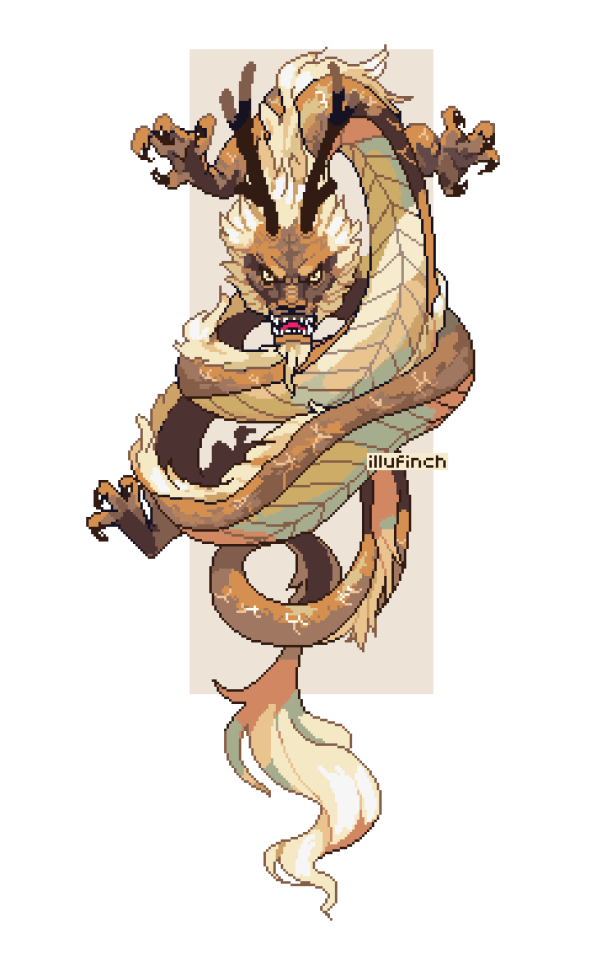#ucs
Text
Just curious about this based on me really missing the cranky old basic art that jetsams used to have. I would shell out a few bucks like 3 or 4 bucks to have an old school red jetsam.

#neopets#neotag#poll#unconverted#unconverted pets#ucs#i also miss old striped shoyrus and electric aishas..........................
17 notes
·
View notes
Text

Sketching the Unconquered Sun and I’m stuck at him only having 4 arms but there are 5 Solar Castes that needs holding…
16 notes
·
View notes
Text
last night I had a dream that Lego announced a UCS AT-TE and everyone on YouTube loved it but it was 3000$ and it just looked like the 2003 one but stretched to be longer and wider but not any taller so it was just bizarrely flat and ugly and I woke up mad
1 note
·
View note
Text

Usc vs. LSU
Sunday, September 1st 2024
Las Vegas Nevada
Allegiant stadium
0 notes
Text
#ucs#civilsubcontractor#unitedconstructionservicesllc#utilityservices#undergroundutilities#unitedconstructionservices#safetyfirst
0 notes
Text

Delve into the architecture components of Cisco Unified Computing System (UCS) for optimized data center operations. Enhance your understanding of UCS deployment and management. https://www.dclessons.com/ucs-architecture-components
#UCS#UnifiedComputingSystem#CiscoUCS#DataCenter#ITInfrastructure#ServerArchitecture#NetworkManagement#DataCenterNetworking#ITArchitecture#EnterpriseIT
0 notes
Video
youtube
I'm not going to lie, this is a beautiful update date to an old fantastic set, although I do wish the GWP was a stand alone set
0 notes
Text
0 notes
Text

Passover seder at UC Berkeley’s Gaza solidarity encampment (via twitter)
8K notes
·
View notes
Text

#my art#pixel#wow finch another dragon? teehee :)#every time i look at this i spot something else to change take it off my hands#anyway have u seen what those whacky guys on neopets are up to with the new uc thing#i want a uc faerie ixi sooooo bad#dragon
7K notes
·
View notes
Text

The University of California (UC) campuses receive more than 221,000 undergraduate applications. From all of those, they could admit only 71,000.
To make such tough decisions, the admissions staff will strive to get to know you, but since none of the UCs conduct student interviews and none accept letters of recommendation, your application will be the only way they get to “meet” you. As you can imagine, grades, test scores, and descriptions of activities and awards can only communicate so much about your dynamic, unique personality—so this is where your personal statement comes in.
To assess whether you will be a good fit for the university and excel once you get there, the admissions staff wants to know who you are: your interests, challenges, thoughts, perspectives, experiences. And they want to understand your background and life circumstances so that they can better interpret the rest of your application.
Through the UC Personal Insight Questions, you have the opportunity to fill them in. As the name suggests, these are not your typical “college essays.” You will be asked to choose four out of eight given prompts and respond to each in 350 words or fewer. The UCs are primarily looking to learn more information about you, so unlike many college essays, these questions are best answered in straightforward, rather than poetic or stylistic, prose.
The UC Personal Insight Questions
Describe an example of your leadership experience in which you have positively influenced others, helped resolve disputes, or contributed to group efforts over time.
Every person has a creative side, and it can be expressed in many ways: problem solving, original and innovative thinking, and artistically, to name a few. Describe how you express your creative side.
What would you say is your greatest talent or skill? How have you developed and demonstrated that talent over time?
Describe how you have taken advantage of a significant educational opportunity or worked to overcome an educational barrier you have faced.
Describe the most significant challenge you have faced and the steps you have taken to overcome this challenge. How has this challenge affected your academic achievement?
Think about an academic subject that inspires you. Describe how you have furthered this interest inside and/or outside of the classroom.
What have you done to make your school or your community a better place?
Beyond what has already been shared in your application, what do you believe makes you stand out as a strong candidate for admissions to the University of California?
📋 Guidelines for How to Approach the UC Questions
1. Read Through All 8 Prompts
Note any that stand out as topics you might want to write about, and jot down any ideas that come to mind.
2. Brainstorm
You have had innumerable experiences over the years, but perhaps have not spent much time reflecting on how they have affected you or what you have learned. So now’s the time to do some deeper-level thinking.
A good place to start is to write down all of your high school activities and awards. Think about what you’ve spent most of your time doing, what’s most important to you, and what you think someone who has never met you might want to hear more about.
Then try writing down five of each of the following:
Personality traits (e.g., optimistic, analytical, humorous)
Interests/passions/talents (e.g., soccer, painting, tutoring)
Values (ideas that are important to you, e.g., honesty, reliability, efficiency)
Objects (items that capture an essence of you, e.g., journal, necklace, green tea)
Challenges (most difficult times of your life)
Times you have felt really excited or lost track of time doing something
Experiences that have defined you or caused you to change
Attributes that make you overall great
From your list, choose three to five of the most important aspects of yourself, and write down specific stories, examples, or details that illustrate each one.
3. Write a Stream-of-Consciousness
Pick your favorite UC prompt and spend 15 minutes writing anything that comes to mind. IMPORTANT: It does not have to sound good. Feel free to write like a third-grader or even make no sense. If it’s easier, record yourself telling a story out loud and then transcribe. And definitely don’t worry about the word limit yet.
4. Choose Your Other Three UC Prompts
As you consider which topics to write about, make sure all four responses will fit together to showcase your character as a whole, without overlapping ideas. Be sure to include aspects of yourself that admissions officers would not learn about in other parts of your application. If you are applying to a professional college (such as the College of Engineering or Biological Sciences), somewhere in your writings discuss your intended field of study and any school or work-related experience you’ve had by answering prompt #6 about an academic subject that inspires you.
5. Structure Your Responses
As you edit your drafts, it often works well to tell a story. Offering a glimpse into your life, you in action, can be the most compelling and effective way to make an impression on your readers. You can recount a single experience or a narrative that spans a few years. Keep in mind that you want to focus on who you currently are, so mostly discuss examples from your high school years. You can certainly mention important events from your childhood but then explain how they’ve contributed to who you are today. For some prompts, tying together a series of examples may work better than one story. In all cases, the more specific details you can include, the better. You’re the only one who has lived your life, so add enough specifics to show them your unique way of interacting with the world.
6. Add Personal Insight
Each answer should also include some insight and reflection. Think about why what you are writing matters, to you and to others, and what you learned from each experience. Expressing uncommon ways of seeing things will help your individuality stand out among the other 200,000 or so applicants.
7. Revise and Proofread
As you read over your writing, consider the following questions that admissions officers are hoping to answer about you:
Who is this person?
Will this person contribute to our campus?
Will this person be successful at our school?
Can this person write ( with proper grammar and mechanics)?
And you will want to be able to answer “yes” to the following questions:
Do you sound like yourself?
Are you speaking genuinely?
Do you answer the prompt?
Despite all these guidelines, remember that there is not a “right” way to answer the UC Personal Insight Questions, per se. Above all, try to have fun and be yourself without judging your answers too much, and you’ll be good to go.
#appblr#studyblr#PIQs#UC application#UCs#college admissions#college prep#college#high school#go to college
0 notes
Link
Upper Cross Syndrome Causes, Symptoms, and Solutions In the digital age, where screens dominate our daily lives, the consequences of poor posture have become increasingly prevalent. Upper Cross Syndrome, a condition related to posture, is now a significant concern. In this article, we will delve into the intricacies of Upper Cross Syndrome, understanding its causes, symptoms, and the importance of addressing this issue. Understanding the Anatomy of Upper Cross Syndrome To comprehend Upper Cross Syndrome fully, it's essential to grasp the underlying anatomy involved. This section will explore the intricate network of muscles and structures affected by poor posture. By understanding the mechanics, you'll gain insights into how Upper Cross Syndrome impacts your body. [caption id="attachment_57753" align="aligncenter" width="1280"] upper cross syndrome[/caption] Causes and Risk Factors Upper Cross Syndrome isn't an overnight occurrence; it develops over time due to specific causes and risk factors. We'll uncover the common culprits behind this condition, such as prolonged screen time, desk jobs, and sedentary lifestyles. By identifying these factors, you can take proactive steps to mitigate your risk. Signs and Symptoms Recognizing the signs and symptoms of Upper Cross Syndrome is crucial for early intervention and effective management. In this section, we will detail the typical indicators, including neck pain, shoulder tightness, and forward head posture. Understanding these symptoms will help you identify if you are at risk. Diagnosis and Assessment Seeking professional guidance is essential if you suspect Upper Cross Syndrome. Here, we will explain how healthcare professionals diagnose and assess the condition. We'll also discuss the importance of a thorough evaluation to tailor an appropriate treatment plan. Treatment and Management Reversing the effects of Upper Cross Syndrome requires a multifaceted approach. This section will cover various treatment options and management strategies, including physical therapy exercises, chiropractic care, and ergonomic adjustments. We'll empower you with practical steps to address the condition effectively. Preventing Upper Cross Syndrome Prevention is often the best course of action when it comes to Upper Cross Syndrome. In this section, we will provide practical guidance on how to prevent the condition from developing in the first place. We'll discuss posture awareness, ergonomics, and exercises that can help maintain good posture. Living with Upper Cross Syndrome For those already dealing with Upper Cross Syndrome, managing the condition is vital for a better quality of life. This part of the article will offer insights into living with the condition. We'll share tips for minimizing discomfort, maintaining an active lifestyle, and seeking ongoing care. Frequently Asked Questions (FAQs) About Upper Cross Syndrome 1. What is Upper Cross Syndrome (UCS)? Upper Cross Syndrome (UCS) is a postural condition characterized by muscle imbalances in the neck, shoulders, and upper back. It typically involves tightness in some muscles and weakness in others, leading to poor posture. 2. What are the common signs of Upper Cross Syndrome? Common signs of UCS include forward head posture, rounded shoulders, neck pain, upper back pain, and muscle tightness in the chest and neck. 3. What causes Upper Cross Syndrome? UCS is often caused by prolonged periods of poor posture, such as hunching over a computer or phone. It can also result from muscular imbalances and overuse of certain muscles. 4. How is Upper Cross Syndrome diagnosed? A healthcare professional, such as a physical therapist or chiropractor, can diagnose UCS through a physical examination and assessment of posture and muscle imbalances. 5. Can Upper Cross Syndrome be reversed? Yes, with the right treatment and exercises, UCS can often be reversed or significantly improved. Proper posture correction and strengthening exercises play a crucial role in the recovery process. 6. What are some exercises to help with Upper Cross Syndrome? Effective exercises include chin tucks, scapular retractions, and stretches to alleviate muscle tightness. A healthcare professional can provide a tailored exercise plan. 7. How can I prevent Upper Cross Syndrome? Preventing UCS involves maintaining good posture, taking breaks from prolonged sitting, and incorporating regular posture-awareness exercises into your routine. 8. Is Upper Cross Syndrome associated with pain? Yes, UCS can lead to pain and discomfort in the neck, shoulders, and upper back. Prompt treatment and posture correction can alleviate these symptoms. 9. Can Upper Cross Syndrome affect daily activities? Yes, UCS can impact daily activities and overall quality of life. It may limit the range of motion and cause discomfort during tasks like lifting, working, or exercising. 10. When should I seek professional help for Upper Cross Syndrome? It's advisable to seek professional help if you experience persistent pain, discomfort, or posture-related issues. A healthcare provider can assess your condition and recommend appropriate treatment. Conclusion: In conclusion, achieving and maintaining good posture is not merely a matter of aesthetics but a fundamental aspect of overall health and well-being. We've explored Upper Cross Syndrome from its roots to its management, empowering you to make informed decisions and prioritize your posture for a healthier, pain-free life.
#Effects_of_poor_posture#Forward_head_posture#Forward_head_syndrome#Kyphotic_posture#Neck_and_shoulder_pain_relief#Postural_correction_exercises#Postural_dysfunction#Rounded_shoulders#Shoulder_hunching#Thoracic_kyphosis#Treating_upper_body_muscle_imbalances#UCS#Understanding_Upper_Cross_Syndrome#Upper_body_muscle_imbalance#Upper_crossed_syndrome
0 notes
Text
#palestine#palestinians#gaza#genocide#gaza solidarity encampment#student protests#campus protests#support for palestine#anti genocide#pro palestine#columbia university#uc berkeley#sorbonne#mcgill university#u of t#university#gaza journalists#palestinian journalists#free palestine#free gaza#justice#oxford#cambridge
4K notes
·
View notes
Text
#ucs#civilsubcontractor#unitedconstructionservicesllc#utilityservices#undergroundutilities#design build construction
0 notes
Text
Universal Card System
My particular brand of Autism has given me a hyperfixation on trading card games. This has lead me to play a lot if different kinds of TCGs, many of which are now long dead. And after noticing some similar through lines between different games, something has compelled me to create conversion rules to play different games against each other.
I made these rules a while ago, so some more recent games haven’t been added yet. Different games will have their own posts explaining how they are adapted.
Basic Rules:
The starting Life total will be 480 (This awkward number is to many games caring about multiples of 6 or 8; this makes the math a bit easier).
You begin the game with 6 Setup Points; this will matter for any game where you start with cards in play.
A card’s Power is how much strong it is in a fight.
A card's Damage is how much damage it deals when it wins.
A card's Health is how much damage it can take before it leaves play.
Synonyms
A core component to these conversion rules is the idea that terms from one game are equivalent to one another. Cards generally come in four varieties:
Characters, which engage in combat
Actions, which have an effect then leave play
Objects, which have continuous effects while in the board
Resource cards, which are used to pay for other effects.
Not every game have every type, and in many cases, there are multiple card types for each of these. (For example, Yu-Gi-Oh has no resource cards, and Magic has both Instants and Sorceries that fall under Actions).
If a card affects cards of a specific type, then any card from a different game that falls under the same category may be treated as having that card type.
In the future, I'll start putting up the different modules for different card games, probably in descending order of popularity (Magic and Pokemon get priority over the likes of Argent Saga or Bakugan).
0 notes